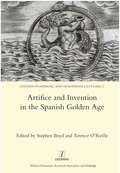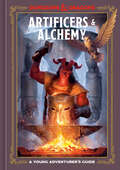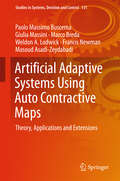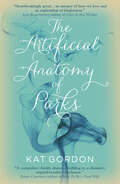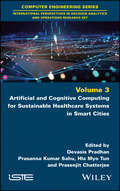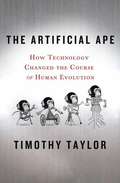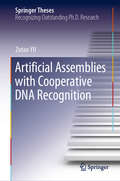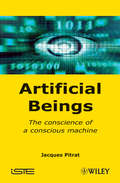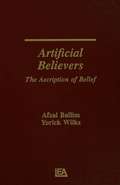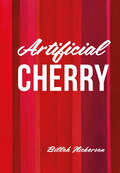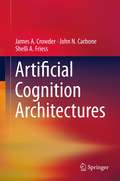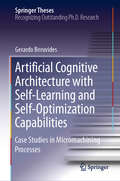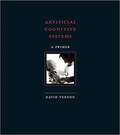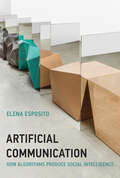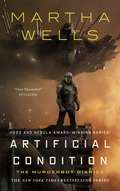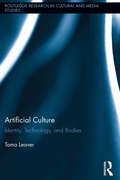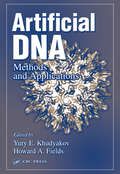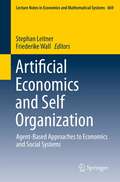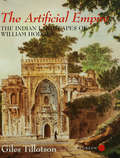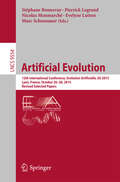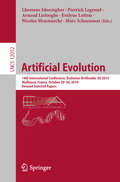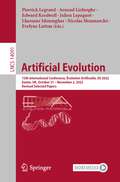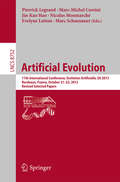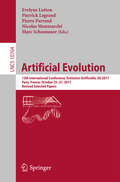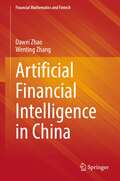- Table View
- List View
Artifice and Invention in the Spanish Golden Age
by Stephen BoydThe corpus of literary works shaped by the Renaissance and the Baroque that appeared in Spain during the sixteenth and seventeenth centuries had a transforming effect on writing throughout Europe and left a rich legacy that scholars continue to explore. For four decades after the Spanish Civil War the study of this literature flourished in Great Britain and Ireland, where many of the leading scholars in the field were based. Though this particular 'Golden Age' was followed by a decline for many years, there have recently been signs of a significant revival. The present book seeks to showcase the latest research of established and younger colleagues from Great Britain and Ireland on the Spanish Golden Age. It falls into four sections, in each of which works by particular authors are examined in detail: prose (Miguel de Cervantes, Francisco de Quevedo, Baltasar Gracian), poetry (The Count of Salinas, Luis de Gongora, Pedro Soto de Rojas), drama (Cervantes, Calderon, Lope de Vega), and colonial writing (Bernardo Balbuena, Hernando Dominguez Camargo, Alonso de Ercilla). There are essays also on more general themes (the motif of poetry as manna; rehearsals on the Golden Age stage; proposals put to viceroys on governing Spanish Naples). The essays, taken together, offer a representative sample of current scholarship in England, Scotland, and Ireland.
Artificers & Alchemy: A Young Adventurer's Guide (Dungeons & Dragons Young Adventurer's Guides)
by Jim Zub Stacy King Official Dungeons & Dragons LicensedAn immersive, one-of-a-kind guide to the wondrous magical items and creatures of Dungeons & Dragons, the world&’s most beloved tabletop role-playing gameFeaturing amazing illustrations and expert insights, Artificers & Alchemy explores peculiar phenomena, sentient weapons, guardian gear, and the artificers who create these enchanted objects. If you&’re eager to start your own D&D adventures, this guidebook provides the perfect starting point to creating worlds of fantasy and weaving an epic story all your own.
Artificial Adaptive Systems Using Auto Contractive Maps: Theory, Applications And Extensions (Studies In Systems, Decision And Control #131)
by Paolo Massimo Buscema Weldon A. Lodwick Giulia Massini Marco Breda Francis Newman Masoud Asadi-ZeydabadiDescribes a newer approach to artificial adaptive systems, the auto contractive map.<P><P> This book offers an introduction to artificial adaptive systems and a general model of the relationships between the data and algorithms used to analyze them. It subsequently describes artificial neural networks as a subclass of artificial adaptive systems, and reports on the backpropagation algorithm, while also identifying an important connection between supervised and unsupervised artificial neural networks. <P> The book’s primary focus is on the auto contractive map, an unsupervised artificial neural network employing a fixed point method versus traditional energy minimization. This is a powerful tool for understanding, associating and transforming data, as demonstrated in the numerous examples presented here. A supervised version of the auto contracting map is also introduced as an outstanding method for recognizing digits and defects. In closing, the book walks the readers through the theory and examples of how the auto contracting map can be used in conjunction with another artificial neural network, the “spin-net,” as a dynamic form of auto-associative memory.
The Artificial Anatomy of Parks
by Kat GordonA young woman is thrust back into the midst of the dysfunctional, secretive family she escaped in this&“heart-piercing psychological drama…a stunner&” (Carol Cassella, author of Oxygen).At twenty-one, Tallulah Park lives alone. There's a sink in her bedroom and a strange damp smell that means she wakes up wheezing. It&’s far from luxurious, but it&’s far away from her difficult family. Then she gets the call that her father has had a heart attack. Now she&’s returning to the root of her bad memories: a world of sniping aunts, precocious cousins, emigrant pianists, and lots of gin, all presided over by an unconventional grandmother. A world where no one will answer Tallie&’s questions: Why did Aunt Vivienne loathe Tallie&’s mother? Why is everyone making excuses for her absent father? Who was Uncle Jack and why would no one talk about him? As Tallie struggles to grow into independence, she will learn the hard way about damage and betrayal, that in the end, the worst betrayals are those we inflict on ourselves. &“With heartbreakingly understated prose, Kat Gordon lays out the terrible loneliness of a child at the center of an exploded, secretive family. It is an autopsy of how we love and an exploration of forgiveness.&” —Liza Klaussmann, author of Tigers in Red Weather&“A genuine and sincere expression of a troubled young soul.&”—The Guardian&“A compulsive family drama…an excellent read.&”—Emma Chapman, author of How To Be a Good Wife
Artificial and Cognitive Computing for Sustainable Healthcare Systems in Smart Cities
by Prasenjit Chatterjee Devasis Pradhan Prasanna Kumar Sahu Hla Myo TunArtificial and Cognitive Computing for Sustainable Healthcare Systems in Smart Cities delves into the transformative potential of artificial and cognitive computing in the realm of healthcare systems, maintaining a specific emphasis on sustainability. By exploring the integration of advanced technologies in smart cities, the authors examine and discuss how AI and cognitive computing can be harnessed to enhance healthcare delivery. The book provides focused navigation through innovative solutions and strategies that contribute to the creation of sustainable healthcare ecosystems within the dynamic environment of smart cities. From optimizing resource utilization to improving patient outcomes, this comprehensive exploration provides insight for readers with an interest in the future of healthcare within the era of intelligent urban development.
The Artificial Ape: How Technology Changed the Course of Human Evolution
by Timothy TaylorWhile Darwin's theory explains our common descent, scientists have grappled with the reasons why human evolution defies the principles of natural selection and why, although we dominate the planet, we have become the weakest ape. In this fascinating narrative, leading archaeologist Timothy Taylor proposes that it was our early adoption of tools, objects, and, now, technology that changed us, demonstrating how: baby slings made out of animal fur freed up our arms up to use tools; clothes kept us warm, reducing our need for body hair; shelter protected us from the elements and led our bodies to become slighter and physically weaker. Drawing on the latest fossil evidence, Taylor shows how humans made choices that assumed greater control over their own evolution.
Artificial Assemblies with Cooperative DNA Recognition (Springer Theses)
by Zutao YUThis book presents three types of synthetically cooperative DNA recognizing assemblies, in order to advance the development of programmable DNA-binding pyrrole–imidazole polyamides (PIPs). PIPs represent the best-characterized class of small molecule DNA binders that can be modified to bind with any predetermined DNA sequence and regulate gene expression patterns in a transgene-free and cost-effective manner. PIPs are characterized by their small molecular size, high binding affinity, programmability, sequence selectivity, and moderate cell permeability. In recent years, there have been numerous novel studies on the applications of these biological tools; this research is thoroughly reviewed in the first chapter. There are several critical issues, however, that impede the further broad study of PIPs, which greatly concern the author. For instance, the short PIP version has an excessively hi^10 bp; this significantly decreases cell permeability. Moreover, the conventional binding strategy for PIP design cannot apply to flexible DNA binding—for example, the DNA-binding mode of a transcription factor pair. In this book, the author describes the development of three kinds of cooperative DNA-binding systems that help resolve the current highly problematic issues concerning PIPs. These three systems offer a range of significant advantages, such as favorable sequence selectivity, long recognition sequence, higher binding affinity, and a flexible gap distance. Released at a critical juncture in the application of PIPs, this book will greatly facilitate their use as therapeutic drugs in the treatment of cancer and hereditary diseases, and in regenerative medicine.
Artificial Beings: The Conscience of a Conscious Machine (Wiley-iste Ser.)
by Jacques PitratThis book demonstrates that not only is it possible to create entities with both consciousness and conscience, but that those entities demonstrate them in ways different from our own, thereby showing a new kind of consciousness.
Artificial Believers: The Ascription of Belief
by Yorick Wilks Afzal BallimModeling of individual beliefs is essential to the computer understanding of natural languages. Phenomena at all levels -- syntactic, semantic, and pragmatic -- cannot be fully analyzed in the absence of models of a hearer and of the hearer's model of other believers. The heart of this text is the presentation of an artificial intelligence (AI) program intended to simulate certain aspects of a human believer. This book provides a prolog program, Viewgen, that maintains belief structures about the world and other believers, and is able to ascribe beliefs to others without direct evidence by using a form of default reasoning. The authors contend that a plausible model such as this can -- in the best cognitive science tradition -- shed light on the long-standing philosophical problem of what belief is. The issues presented here will be of considerable interest to an informed general reader as well as those with a background in any of the disciplines that make up what is now called cognitive science: philosophy, linguistics, psychology, neuropsychology, and also AI itself.
Artificial Cherry
by Billeh NickersonBilleh Nickerson is one of Canada's showiest poets; his work is colorful, witty, and wise, with undertones of sexy. Alternating between outlandish and poignant, Artificial Cherry heralds the return of Billeh's cheeky/sweet sensibilities. From Elvis Presley and glass eyes to phantom lovers and hockey haiku, you're never quite sure where Billeh will take you, but the outcomes are always worth the ride.Billeh Nickerson is the author of three previous poetry collections, including Impact: The Titanic Poems, and co-editor of Seminal: The Anthology of Canada's Gay Male Poets. He teaches creative writing at Kwantlen Polytechnic University.
Artificial Cognition Architectures
by Shelli Friess John N. Carbone James CrowderThe goal of this book is to establish the foundation, principles, theory, and concepts that are the backbone of real, autonomous Artificial Intelligence. Presented here are some basic human intelligence concepts framed for Artificial Intelligence systems. These include concepts like Metacognition and Metamemory, along with architectural constructs for Artificial Intelligence versions of human brain functions like the prefrontal cortex. Also presented are possible hardware and software architectures that lend themselves to learning, reasoning, and self-evolution
Artificial Cognitive Architecture with Self-Learning and Self-Optimization Capabilities: Case Studies In Micromachining Processes (Springer Theses)
by Gerardo BeruvidesThis book introduces three key issues: (i) development of a gradient-free method to enable multi-objective self-optimization; (ii) development of a reinforcement learning strategy to carry out self-learning and finally, (iii) experimental evaluation and validation in two micromachining processes (i.e., micro-milling and micro-drilling). The computational architecture (modular, network and reconfigurable for real-time monitoring and control) takes into account the analysis of different types of sensors, processing strategies and methodologies for extracting behavior patterns from representative process’ signals. The reconfiguration capability and portability of this architecture are supported by two major levels: the cognitive level (core) and the executive level (direct data exchange with the process). At the same time, the architecture includes different operating modes that interact with the process to be monitored and/or controlled. The cognitive level includes three fundamental modes such as modeling, optimization and learning, which are necessary for decision-making (in the form of control signals) and for the real-time experimental characterization of complex processes. In the specific case of the micromachining processes, a series of models based on linear regression, nonlinear regression and artificial intelligence techniques were obtained. On the other hand, the executive level has a constant interaction with the process to be monitored and/or controlled. This level receives the configuration and parameterization from the cognitive level to perform the desired monitoring and control tasks.
Artificial Cognitive Systems: A Primer
by David VernonA concise introduction to a complex field, bringing together recent work in cognitive science and cognitive robotics to offer a solid grounding on key issues. <p><p> This book offers a concise and accessible introduction to the emerging field of artificial cognitive systems. Cognition, both natural and artificial, is about anticipating the need for action and developing the capacity to predict the outcome of those actions. Drawing on artificial intelligence, developmental psychology, and cognitive neuroscience, the field of artificial cognitive systems has as its ultimate goal the creation of computer-based systems that can interact with humans and serve society in a variety of ways. This primer brings together recent work in cognitive science and cognitive robotics to offer readers a solid grounding on key issues. <p><p> The book first develops a working definition of cognitive systems―broad enough to encompass multiple views of the subject and deep enough to help in the formulation of theories and models. It surveys the cognitivist, emergent, and hybrid paradigms of cognitive science and discusses cognitive architectures derived from them. It then turns to the key issues, with chapters devoted to autonomy, embodiment, learning and development, memory and prospection, knowledge and representation, and social cognition. Ideas are introduced in an intuitive, natural order, with an emphasis on the relationships among ideas and building to an overview of the field. The main text is straightforward and succinct; sidenotes drill deeper on specific topics and provide contextual links to further reading.
Artificial Communication: How Algorithms Produce Social Intelligence (Strong Ideas)
by Elena EspositoA proposal that we think about digital technologies such as machine learning not in terms of artificial intelligence but as artificial communication.Algorithms that work with deep learning and big data are getting so much better at doing so many things that it makes us uncomfortable. How can a device know what our favorite songs are, or what we should write in an email? Have machines become too smart? In Artificial Communication, Elena Esposito argues that drawing this sort of analogy between algorithms and human intelligence is misleading. If machines contribute to social intelligence, it will not be because they have learned how to think like us but because we have learned how to communicate with them. Esposito proposes that we think of &“smart&” machines not in terms of artificial intelligence but in terms of artificial communication. To do this, we need a concept of communication that can take into account the possibility that a communication partner may be not a human being but an algorithm—which is not random and is completely controlled, although not by the processes of the human mind. Esposito investigates this by examining the use of algorithms in different areas of social life. She explores the proliferation of lists (and lists of lists) online, explaining that the web works on the basis of lists to produce further lists; the use of visualization; digital profiling and algorithmic individualization, which personalize a mass medium with playlists and recommendations; and the implications of the &“right to be forgotten.&” Finally, she considers how photographs today seem to be used to escape the present rather than to preserve a memory.
Artificial Condition: The Murderbot Diaries (The Murderbot Diaries #2)
by Martha WellsA USA Today bestsellerThe "I love Murderbot!" —Ann LeckieArtificial Condition is the follow-up to Martha Wells's Nebula Award-winning, New York Times bestselling All Systems RedIt has a dark past—one in which a number of humans were killed. A past that caused it to christen itself “Murderbot”. But it has only vague memories of the massacre that spawned that title, and it wants to know more.Teaming up with a Research Transport vessel named ART (you don’t want to know what the “A” stands for), Murderbot heads to the mining facility where it went rogue.What it discovers will forever change the way it thinks…At the Publisher's request, this title is being sold without Digital Rights Management Software (DRM) applied.
Artificial Culture: Identity, Technology, and Bodies (Routledge Research in Cultural and Media Studies)
by Tama LeaverArtificial Culture is an examination of the articulation, construction, and representation of "the artificial" in contemporary popular cultural texts, especially science fiction films and novels. The book argues that today we live in an artificial culture due to the deep and inextricable relationship between people, our bodies, and technology at large. While the artificial is often imagined as outside of the natural order and thus also beyond the realm of humanity, paradoxically, artificial concepts are simultaneously produced and constructed by human ideas and labor. The artificial can thus act as a boundary point against which we as a culture can measure what it means to be human. Science fiction feature films and novels, and other related media, frequently and provocatively deploy ideas of the artificial in ways which the lines between people, our bodies, spaces and culture more broadly blur and, at times, dissolve. Building on the rich foundational work on the figures of the cyborg and posthuman, this book situates the artificial in similar terms, but from a nevertheless distinctly different viewpoint. After examining ideas of the artificial as deployed in film, novels and other digital contexts, this study concludes that we are now part of an artificial culture entailing a matrix which, rather than separating minds and bodies, or humanity and the digital, reinforces the symbiotic connection between identities, bodies, and technologies.
Artificial DNA: Methods and Applications
by Yury E. Khudyakov Howard A. FieldsCombining elements of biochemistry, molecular biology, and immunology, artificial DNA can be employed in a number of scientific disciplines. Some of the varied applications include site-specific mutagenesis, hybridization, amplification, protein engineering, anti-sense technology, DNA vaccines, protein vaccines, recombinant antibodies, screening fo
Artificial Economics and Self Organization: Agent-Based Approaches to Economics and Social Systems (Lecture Notes in Economics and Mathematical Systems #669)
by Stephan Leitner Friederike WallThis volume presents recent advances in the dynamic field of Artificial Economics and its various applications. Artificial Economics provides a structured approach to model and investigate economic and social systems. In particular, this approach is based on the use of agent-based simulations and further computational techniques. The main aim is to analyze the outcomes at the overall systems' level as results from the agents' behavior at the micro-level. These emergent characteristics of complex economic and social systems can neither be foreseen nor are they intended. The emergence rather makes these systems function. Artificial Economics especially facilitates the investigation of this emergent systems' behavior.
The Artificial Empire: The Indian Landscapes of William Hodges
by G. H. TillotsonThe role of the visual arts in the assertion of European colonial power has been the subject of much recent investigation and redefinition. This book takes as a ground for discussion the representation of Indian scenery and architecture by British artists in the late eighteenth and early nineteenth centuries. It includes the work of a diversity of
Artificial Evolution: 12th International Conference, Evolution Artificielle, EA 2015, Lyon, France, October 26-28, 2015. Revised Selected Papers (Lecture Notes in Computer Science #9554)
by Stéphane Bonnevay Pierrick Legrand Nicolas Monmarché Evelyne Lutton Marc SchoenauerThis book constitutes the thoroughly refereedpost-conference proceedings of the 12th International Conference on ArtificialEvolution, EA 2015, held in Lyon, France, in October 2015. The 18 revised papers were carefully reviewed andselected from 31 submissions. The focus of the conference is on followingtopics: Evolutionary Computation, Evolutionary Optimization, Co-evolution,Artificial Life, Population Dynamics, Theory, Algorithmics and Modeling,Implementations, Application of Evolutionary Paradigms to the Real World,Dynamic Optimization, Machine Learning and hybridization with other softcomputing techniques.
Artificial Evolution: 14th International Conference, Évolution Artificielle, EA 2019, Mulhouse, France, October 29–30, 2019, Revised Selected Papers (Lecture Notes in Computer Science #12052)
by Lhassane Idoumghar Pierrick Legrand Arnaud Liefooghe Evelyne Lutton Nicolas Monmarché Marc SchoenauerThis book constitutes the thoroughly refereed post-conference proceedings of the 14th International Conference on Artificial Evolution, EA 2019, held in Mulhouse, France, in October 2019. The 16 revised papers were carefully reviewed and selected from 33 submissions. The papers cover a wide range of topics in the field of artificial evolution, such as evolutionary computation, evolutionary optimization, co-evolution, artificial life, population dynamics, theory, algorithmic and modeling, implementations, application of evolutionary paradigms to the real world (industry, biosciences...), other biologically-inspired paradigms (swarm, artificial ants, artificial immune systems, cultural algorithms...), memetic algorithms, multi-objective optimization, constraint handling, parallel algorithms, dynamic optimization, machine learning and hybridization with other soft computing techniques.
Artificial Evolution: 15th International Conference, Évolution Artificielle, EA 2022, Exeter, UK, October 31 – November 2, 2022, Revised Selected Papers (Lecture Notes in Computer Science #14091)
by Pierrick Legrand Arnaud Liefooghe Edward Keedwell Julien Lepagnot Lhassane Idoumghar Nicolas Monmarché Evelyne LuttonThis book constitutes the refereed post-conference proceedings of the 15th International Conference, Évolution Artificielle, EA 2022, held in Exeter, UK, during October 31–November 2, 2022.The 15 full papers were carefully reviewed and selected from 18 submissions. The papers cover a wide range of topics in the field of artificial evolution, including, but not limited to: evolutionary computation, evolutionary optimization, coevolution, artificial life, population dynamics, theory, algorithmic and modeling, implementations.
Artificial Evolution: 11th International Conference, Evolution Artificielle, EA 2013, Bordeaux, France, October 21-23, 2013. Revised Selected Papers (Lecture Notes in Computer Science #8752)
by Pierrick Legrand Nicolas Monmarché Evelyne Lutton Marc Schoenauer Marc-Michel Corsini Jin-Kao HaoThis book constitutes the refereed proceedings of the 11th International Conference on Artificial Evolution, EA 2013, held in Bordeaux, France, in October 2013. The 20 revised papers were carefully reviewed and selected from 39 submissions. The papers are focused to theory, ant colony optimization, applications, combinatorial and discrete optimization, memetic algorithms, genetic programming, interactive evolution, parallel evolutionary algorithms, and swarm intelligence.
Artificial Evolution: 6th International Conference, Evolution Artificielle, EA 2003, Marseilles, France, October 27-30 2003 (Lecture Notes in Computer Science #2936)
by Pierrick Legrand Nicolas Monmarché Evelyne Lutton Marc Schoenauer Pierre ParrendThis book constitutes the thoroughly refereed post-proceedings of the 6th International Conference on Artificial Evolution, EA 2003, held in Marseilles, France in October 2003.<P><P> The 32 revised full papers presented were carefully selected and improved during two rounds of reviewing and revision. The papers are organized in topical sections on theoretical issues, algorithmic issues, applications, implementation issues, genetic programming, coevolution and agent systems, artificial life, and cellular automata.
Artificial Financial Intelligence in China (Financial Mathematics and Fintech)
by Dawei Zhao Wenting ZhangThis book starts from the application scenarios of artificial financial intelligence regulation, commercial banking, wealth management and payments, etc., and makes a detailed study of the main scenarios of the application of China's artificial intelligence in the financial field, and also analysis specific application cases of China.With the popularization of smart phones and the rapid development of e-commerce, mobile payment, big data and other technologies are in the ascendant in China in recent years. In particular, artificial intelligence technologies in the form of facial, speech and semantic recognition are showing preliminary advantages in the field of FinTech, and the future era of Intelligent Finance has quietly come. The Chinese government has clearly put forward "China should rely on a robust cycle of domestic demand and innovation as the main driver of the economy while maintaining foreign markets and investors as a second engine of growth", science and technology innovation is the basic motivation of economic and social cycle, to implement the " dual circulation strategy ", it is necessary to understand the key role of scientific and technological innovation in financial innovation services, and improve financial services must be driven by science and technology. There is a natural relationship between artificial intelligence and financial services, because financial services are credit and information intermediaries, and data is the most critical for finance, while artificial intelligence has a super ability in dealing with complex data. At present, many Chinese Banks have applied artificial intelligence to their daily operations and management, such as accurate customer identification, enhanced process tracking, intelligent marketing, and product process transformation, so as to simplify financial service processes and shorten service cycles. In General, this book both pays attention to practical application and theoretical, which is a useful reference book in theoretical research and practical work, and also helps readers to understand the application of intelligent finance in China.
